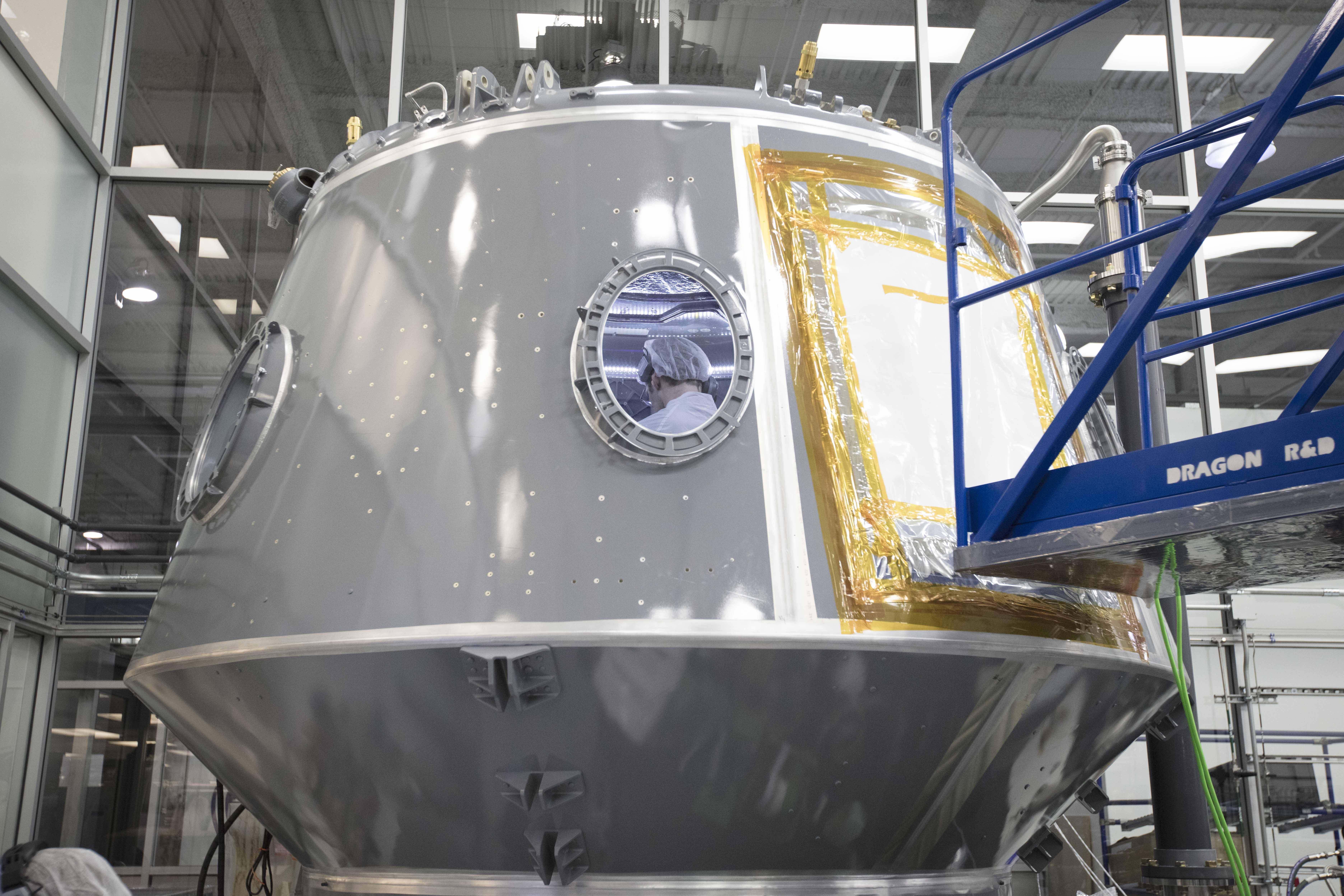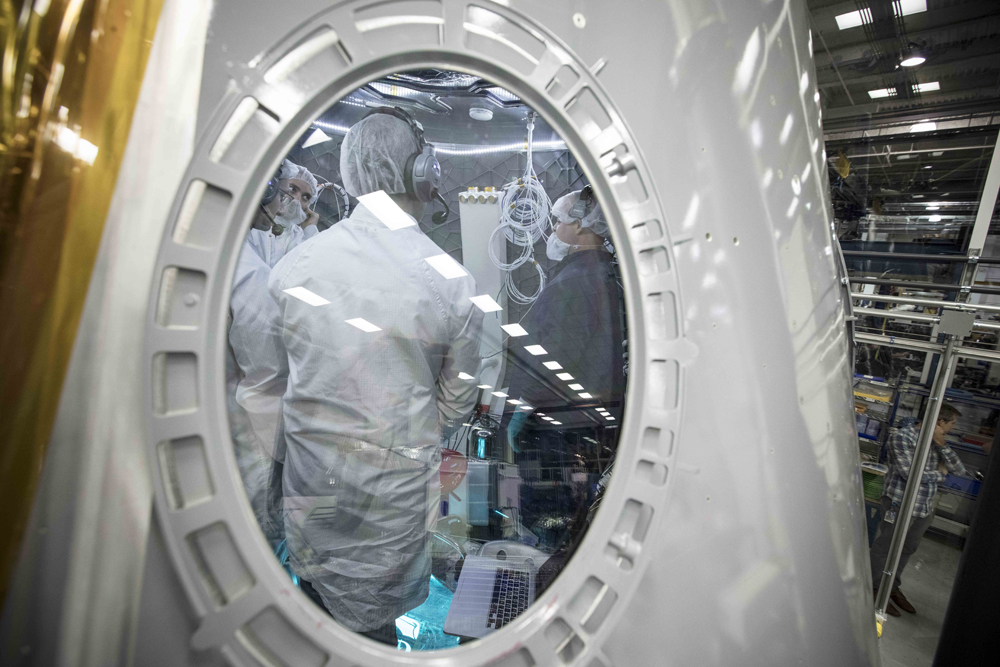NASA Tests SpaceX Crew Dragon Capsule's Life-Support Systems

NASA engineers are evaluating the life-support system planned for SpaceX's Crew Dragon capsule to make sure it will keep astronauts safe while they're traveling to and from the International Space Station.
SpaceX built the ECLSS (pronounced EE'-cliss, and short for "environmental control and life support system") Module to test the essential life-support systems for the company's Crew Dragon spacecraft, which could fly crewed missions to the orbiting lab as soon as 2018. The module is a prototype spacecraft designed "as close to the specifications of operational spacecraft as possible," allowing engineers to work out all the kinks before flight versions of the Crew Dragon are manufactured, NASA officials said in a statement.
While NASA engineers are helping to evaluate the ECLSS Module, SpaceX is building the spacecraft, launch systems and operational networks that will carry astronauts to the space station on missions for NASA's Commercial Crew Program. Once NASA certifies the spacecraft, the Crew Dragon will launch from NASA's Kennedy Space Center atop a Falcon 9 rocket, agency officials said in the statement. [SpaceX's Crew Dragon Spacecraft in Pictures]

"ECLSS systems and subsystems present unique challenges to a developer," Brian Daniel, crew systems lead for NASA's Commercial Crew Program, said in the statement. "Such systems must assure tight control of parameters that are important to human safety, such as temperature, carbon dioxide levels, oxygen levels and cabin pressure. The various functions of the life support system must not only be failure tolerant and robust, but also able to perform their function for the whole gamut of the mission, from countdown to splashdown."
The ECLSS is a complex network of machinery, pipes, tanks and sensors that relies on computer software to automatically adjust conditions inside the spacecraft and ensure the safety of the crew throughout a mission. However, "astronauts will still wear launch-and-entry spacesuits while inside the spacecraft during certain phases of their missions to guard against cabin leaks or other emergencies, such as a launch abort," NASA officials said.

To test the functionality of the ECLSS Module, engineers were sealed inside the prototype spacecraft and were exposed to a mix of oxygen and nitrogen — conditions similar to what astronauts will experience in flight.
"Unlike relying solely on computer simulation and analysis, the ECLSS Module allows us to test and observe Crew Dragon's life support systems as they autonomously control a real cabin environment," Nicolas Lima, a life support systems engineer at SpaceX, said in the statement. "Extensive testing of the ECLSS module has and will continue to contribute to improvements to Crew Dragon's design and operation, which ultimately leads to greater crew safety."
Get the Space.com Newsletter
Breaking space news, the latest updates on rocket launches, skywatching events and more!
Follow Samantha Mathewson @Sam_Ashley13. Follow us @Spacedotcom,Facebook and Google+. Original article on Space.com.
Join our Space Forums to keep talking space on the latest missions, night sky and more! And if you have a news tip, correction or comment, let us know at: community@space.com.

Samantha Mathewson joined Space.com as an intern in the summer of 2016. She received a B.A. in Journalism and Environmental Science at the University of New Haven, in Connecticut. Previously, her work has been published in Nature World News. When not writing or reading about science, Samantha enjoys traveling to new places and taking photos! You can follow her on Twitter @Sam_Ashley13.









